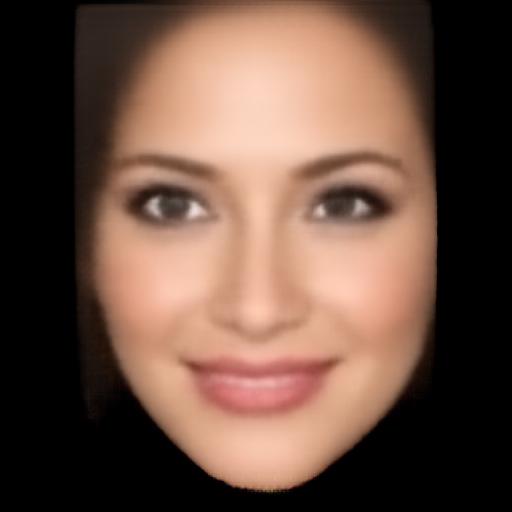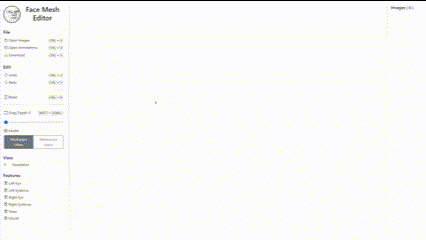GANonymization
Published:
A GAN-based Face Anonymization Framework for Preserving Emotional Expressions
Published:
A GAN-based Face Anonymization Framework for Preserving Emotional Expressions
Published:
An Editor to manually adjust automatic Landmark/Mesh Detections
Published in 2021 43rd Annual International Conference of the IEEE Engineering in Medicine & Biology Society (EMBC), 2021
Cancer is a major public health issue and takes the second-highest toll of deaths caused by non-communicable diseases worldwide. Automatically detecting lesions at an early stage is essential to increase the chance of a cure. This study proposes a novel dilated Faster R-CNN with modulated deformable convolution and modulated deformable positive-sensitive region of interest pooling to detect lesions in computer tomography images. A pre-trained VGG-16 is transferred as the backbone of Faster R-CNN, followed by a region proposal network and a region of interest pooling layer to achieve lesion detection […]
Recommended citation: Hellmann, Fabio et al. "Deformable dilated faster R-CNN for universal lesion detection in CT images." 2021 43rd Annual International Conference of the IEEE Engineering in Medicine & Biology Society (EMBC). IEEE, 2021 https://ieeexplore.ieee.org/abstract/document/9631021/
Published in arXiv preprint arXiv:2210.12705, 2022
Computer vision-based methods have valuable use cases in precision medicine, and recognizing facial phenotypes of genetic disorders is one of them. Many genetic disorders are known to affect faces' visual appearance and geometry. Automated classification and similarity retrieval aid physicians in decision-making to diagnose possible genetic conditions as early as possible. Previous work has addressed the problem as a classification problem and used deep learning methods […]
Recommended citation: Sümer, Ömer et al. "Few-shot meta learning for recognizing facial phenotypes of genetic disorders." arXiv preprint arXiv:2210.12705. 2022 https://arxiv.org/abs/2210.12705
Published in Neuro-Oncology, 2022
INTRODUCTION: We aimed to (1) characterize the spectrum of clinical phenotypes of NF1 in a random pediatric population, (2) correlate genotype with phenotypic expression for those with a genetic diagnosis, and (3) explore radiological features of NF1 in the central nervous system (CNS) by radiomics analyses to predict clinical course. METHODS: We performed a database search in the hospital information system of the University Children’s Hospital between January 2017 and December 2020 for patients with NF1 and evaluated the clinical phenotype by retrospective chart review. RESULTS: 75 children/adolescents were identified with suspicion/clinical diagnosis of NF1 (median age 10.0 years (range, 1 […]
Recommended citation: Angelova-Toshkina, Daniela et al. "NFB-03. Neurological manifestations in children and adolescents with Neurofibromatosis type 1-Implications for management and surveillance." Neuro-Oncology. Oxford University Press, 2022 https://academic.oup.com/neuro-oncology/article-abstract/24/Supplement_1/i128/6601248
Published in Proceedings of the IEEE/CVF winter conference on applications of computer vision, 2023
Rare genetic disorders affect more than 6% of the global population. Reaching a diagnosis is challenging because rare disorders are very diverse. Many disorders have recognizable facial features that are hints for clinicians to diagnose patients. Previous work, such as GestaltMatcher, utilized representation vectors produced by a DCNN similar to AlexNet to match patients in high-dimensional feature space to support" unseen" ultra-rare disorders […]
Recommended citation: Hustinx, Alexander et al. "Improving deep facial phenotyping for ultra-rare disorder verification using model ensembles." Proceedings of the IEEE/CVF winter conference on applications of computer vision. 2023 https://openaccess.thecvf.com/content/WACV2023/html/Hustinx_Improving_Deep_Facial_Phenotyping_for_Ultra-Rare_Disorder_Verification_Using_Model_WACV_2023_paper.html
Published in arXiv preprint arXiv:2305.08660, 2023
COVID-19 presence classification and severity prediction via (3D) thorax computed tomography scans have become important tasks in recent times. Especially for capacity planning of intensive care units, predicting the future severity of a COVID-19 patient is crucial. The presented approach follows state-of-theart techniques to aid medical professionals in these situations. It comprises an ensemble learning strategy via 5-fold cross-validation that includes transfer learning and combines pre-trained 3D-versions of ResNet34 and DenseNet121 for COVID19 classification and severity prediction respectively […]
Recommended citation: Müller, Dominik et al. "Towards automated COVID-19 presence and severity classification." arXiv preprint arXiv:2305.08660. 2023 https://arxiv.org/abs/2305.08660
Published in Bioinformatics, 2024
SummaryArtificial intelligence (AI) is increasingly used in genomics research and practice, and generative AI has garnered significant recent attention. In clinical applications of generative AI, aspects of the underlying datasets can impact results, and confounders should be studied and mitigated. One example involves the facial expressions of people with genetic conditions. Stereotypically, Williams (WS) and Angelman (AS) syndromes are associated with a ‘‘happy’’ demeanor, including a smiling expression […]
Recommended citation: Patel, Tanviben et al. "Approximating facial expression effects on diagnostic accuracy via generative AI in medical genetics." Bioinformatics. Oxford University Press, 2024 https://academic.oup.com/bioinformatics/article-abstract/40/Supplement_1/i110/7700869
Published in Datenschutz und Datensicherheit-DuD, 2024
This paper explores face anonymization techniques in the context of the General Data Protection Regulation (GDPR) amidst growing privacy concerns due to the widespread use of personal data in machine learning. We focus on unstructured data, specifically facial data, and discuss two approaches to assessing re-identification risks: the risk- based approach supported by GDPR and the zero or strict approach. Emphasizing a process-oriented perspective, we argue that face anonymization should consider the overall data processing context, including the actors involved and the measures taken, to achieve legally secure anonymization under GDPR’s stringent requirements. […]
Recommended citation: Hellmann, Fabio et al. "Anonymization of faces: technical and legal perspectives." Datenschutz und Datensicherheit-DuD. Springer Fachmedien Wiesbaden, 2024 https://link.springer.com/article/10.1007/s11623-024-1938-6
Published in PLoS Genetics, 2024
Artificial intelligence (AI) for facial diagnostics is increasingly used in the genetics clinic to evaluate patients with potential genetic conditions. Current approaches focus on one type of AI called Deep Learning (DL). While DL- based facial diagnostic platforms have a high accuracy rate for many conditions, less is understood about how this technology assesses and classifies (categorizes) images, and how this compares to humans. To compare human and computer attention, we performed eye-tracking analyses of geneticist clinicians (n = 22) and non-clinicians (n = 22) who viewed images of people with 10 different genetic conditions, as well as images of unaffected individuals […]
Recommended citation: Duong, Dat et al. "Comparison of clinical geneticist and computer visual attention in assessing genetic conditions." PLoS Genetics. Public Library of Science, 2024 https://journals.plos.org/plosgenetics/article?id=10.1371/journal.pgen.1011168
Published in EUROPEAN JOURNAL OF HUMAN GENETICS, 2024
Recommended citation: Hellmann, Fabio et al. "Face Mesh Detection and Annotation for Genetic Disorders with Facial Phenotypes." EUROPEAN JOURNAL OF HUMAN GENETICS. SPRINGERNATURE, 2024 https://scholar.google.com/scholar?cluster=15454764579474716658&hl=en&oi=scholarr
Published in ACM Transactions on Multimedia Computing, Communications and Applications, 2024
In recent years, the increasing availability of personal data has raised concerns regarding privacy and security. One of the critical processes to address these concerns is data anonymization, which aims to protect individual privacy and prevent the release of sensitive information. This research focuses on the importance of face anonymization. Therefore, we introduce GANonymization, a novel face anonymization framework with facial expression-preserving abilities […]
Recommended citation: Hellmann, Fabio et al. "Ganonymization: A gan-based face anonymization framework for preserving emotional expressions." ACM Transactions on Multimedia Computing, Communications and Applications. ACM, 2024 https://dl.acm.org/doi/abs/10.1145/3641107
Published in PrePrint, 2024
In the era of Industry 4.0, manufacturing is rapidly shifting towards automation, particularly in processes such as quality control, production lines, and logistics. However, the food industry poses distinctive challenges to automation due to the variability in raw materials and stringent hygiene standards. Sensory analysis is crucial in maintaining consistent quality and safety while manufacturing food products […]
Recommended citation: Schiller, Dominik et al. "More Than Noise: Assessing the Viscosity of Food Products Based on Sound Emission." PrePrint. Springer Nature Switzerland, 2024 https://link.springer.com/chapter/10.1007/978-3-031-66694-0_13
Published in Medical Image Analysis, 2024
Challenges drive the state-of-the-art of automated medical image analysis. The quantity of public training data that they provide can limit the performance of their solutions. Public access to the training methodology for these solutions remains absent. This study implements the Type Three (T3) challenge format, which allows for training solutions on private data and guarantees reusable training methodologies […]
Recommended citation: Boulogne, Luuk et al. "The STOIC2021 COVID-19 AI challenge: applying reusable training methodologies to private data." Medical Image Analysis. Elsevier, 2024 https://www.sciencedirect.com/science/article/pii/S1361841524001555
Published in PrePrint, 2025
Modern Artificial Intelligence (AI) has demonstrated its effectiveness by achieving human-level performance in various complex tasks, including the biomedical field. Cancer research, adapting to a fast-changing world, is leveraging AI as a promising framework to better understand tumor development. Moreover, current AI methods can help predict more suitable and personalized treatment strategies for specific types of tumors. We explored AI methods applied to Neurofibromatosis Type 1, focusing on glial tumors […]
Recommended citation: Hellmann, Fabio et al. "Artificial intelligence-based tools for precision diagnosis and treatment of neurofibromatosis type 1 associated peripheral and central glial tumors." PrePrint. BioMed Central, 2025 https://link.springer.com/article/10.1186/s13023-025-04093-5
Published in European Journal of Human Genetics, 2025
The facial gestalt (overall facial morphology) is a characteristic clinical feature in many genetic disorders that is often essential for suspecting and establishing a specific diagnosis. Therefore, publishing images of individuals affected by pathogenic variants in disease-associated genes has been an important part of scientific communication. Furthermore, medical imaging data is also crucial for teaching and training deep-learning models such as GestaltMatcher. However, medical data is often sparsely available, and sharing patient images involves risks related to privacy and re-identification […]
Recommended citation: Kirchhoff, Aron et al. "GestaltGAN: synthetic photorealistic portraits of individuals with rare genetic disorders." European Journal of Human Genetics. Springer International Publishing, 2025 https://www.nature.com/articles/s41431-025-01787-z
Published in PrePrint, 2025
Hybrid neurofibroma/schwannoma tumors (HNS) represent a still underrecognized, yet clinically and diagnostically significant entity within the spectrum of schwannomatosis (SWN). While classical schwannomas have been well known for decades, HNS have only recently been described as a distinct histological pattern, composed of intermixed features typical of both schwannomas and neurofibromas. Differentiating HNS from pure neurofibroma (Nf) is critical, as misclassification may lead to an incorrect diagnosis of neurofibromatosis type 1 rather than SWN. The distinction of hybrid tumors (more precisely HNS) is especially important in SWN forms outside the neurofibromatosis type 2 (NF2) spectrum (NF2-SWN), where major diagnostic criteria are less well defined, making histological differentiation even more significant […]
Recommended citation: Tippner, Daniel et al. "Hybrid neurofibroma/schwannoma in schwannomatosis—a diagnostically challenging benign peripheral nerve sheath tumour." PrePrint. Springer Netherlands, 2025 https://link.springer.com/article/10.1007/s10689-025-00505-4
Published in ICERI2025 Proceedings, 2025
In the context of contemporary education, traditional pedagogical approaches based on passively attending lectures often prove inadequate in engaging learners who are increasingly immersed in a dynamic, technology-driven environment. To address the needs of this generation effectively, it is essential to invest efforts in improving instructional and tailored strategies that accommodate diverse learning styles and incorporate state-of-the-art technological advancements. The necessity of acquiring a basic knowledge of the subject matter and the need for experiential learning can be addressed through a combination of the ‘‘flipped classroom’’ methodology and projects that emphasize the ‘‘learning by doing’’ approach. In the Interactive Machine Learning course, online lectures are combined with guided exercises and projects in the classroom, allowing students to apply the learned concepts as they fit […]
Recommended citation: Jimenez, C et al. "INTERACTIVE MACHINE LEARNING TO ENHANCE STUDENTS'UNDERSTANDING AND SATISFACTION APPLYING THE LEARNING BY DOING METHODOLOGY." ICERI2025 Proceedings. IATED, 2025 https://library.iated.org/view/LUNAJIMENEZ2025INT
Published:
In this presentation I’ll present the supportive surveillance with AI in Neurofibromatosis Type 1 (NF1) by detecting cerebral abnormalities in an early stage for better treatment options.
Undergraduate course, University of Augsburg, Chair for Human-Centered Artificial Intelligence, 2021
Practical course for Computer Science and Medical Computer Science students.
Graduate course, University of Augsburg, Chair for Human-Centered Artificial Intelligence, 2021
Practical course for Computer Science students.
Undergraduate course, University of Augsburg, Chair for Human-Centered Artificial Intelligence, 2023
Lecture with exercises for students in Computer Science and related fields.